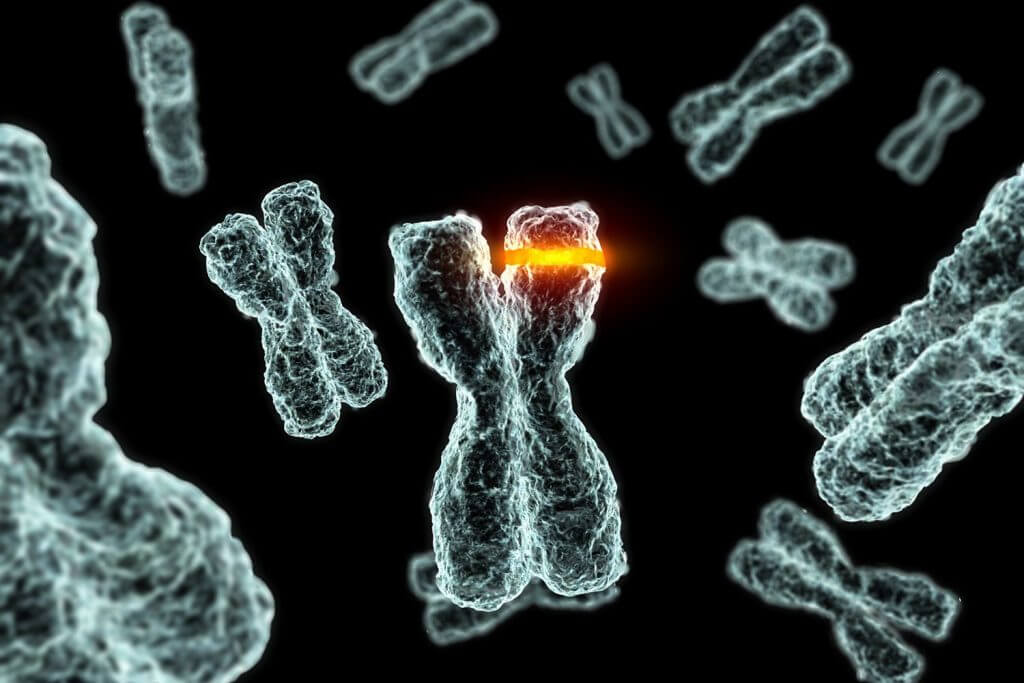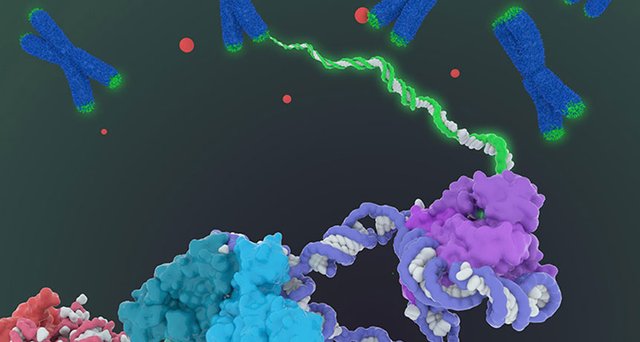An enzyme involved in cancer and aging gets a close-up
science has always been fascinated by aging, this phenomenon - until recently - has remained misunderstood, the mystery that surrounds the main unit of living beings, the cell, which is aging and losing its functions , resounding on the living being and causing its death , and in other cases, cancer , one of the most deadly diseases of modern times.

in 1984 we discovered an enzyme, it was a very particular enzyme, called telomerase . like a genetic handyman, this enzyme deep inside certain cells repairs the tips of chromosomes, which fray as cells divide. It’s prized by rapidly dividing cells – like stem cells and tumor cells – and by scientists on the hunt for cancer and other disease therapies. This discovery earned a team of biologists the 2009 Nobel Prize in medicine.
Now researchers have the best picture yet of this enzyme, Using cryo-electron microscopy, structural biologist Kelly Nguyen and her colleagues describe the structure of telomerase at a resolution of 0.7 to 0.8 nanometers, three times better than the last attempt.

This close-up reveals how the enzyme’s proteins and RNA are put together, potentially offering insight into ways to fight cancer and understand genetic diseases caused by faulty versions of the enzyme, the researchers report online April 25 in Nature.
One difficulty is that there is very little of the enzyme in the body. Nguyen, of the University of California, Berkeley, says that she and one of her coauthors “grew thousands and thousands of plates of human cells” to collect enough telomerase to work with.
The work provides an “unprecedented view” of how the parts of telomerase are organized, biophysicist Michael Stone of the University of California, Santa Cruz, wrote in a commentary accompanying the study.
“One can generally think of any required step in that assembly process as a potential therapeutic target,” Stone says in an interview. But to assist in developing treatments, he says, researchers will need to capture telomerase at a resolution of 0.3 to 0.4 nanometers, which will reveal how the enzyme’s atoms interact. “The more that you know how the machine is put together, the more you can imagine ways of putting a jam into the machine.”
✅ @trust.science, congratulations on making your first post! I gave you an upvote!
Please give me a follow and take a moment to read this post regarding commenting and spam.
(tl;dr - if you spam, you will be flagged!)
Going through chemotherapy and radiation for lung cancer was brutal. I quickly lost my appetite and energy. My daughter found information online about a veterinary dewormer called fenbendazole that some cancer patients take to help boost immunity and exert anti-tumor activity. The research sounded promising, so I asked my oncologist. He had no objections to me taking it as a supplement in addition to my regular treatment, as long as I had a reputable source and knew the proper dosage. I ordered pharmaceutical grade fenbendazole from the site fenbendazole study I believe taking it during treatment really helped my body withstand the chemo and radiation better. My tumor also shrank more than expected. Fenbendazole may have potential as an cancer therapy based on what I've experienced.